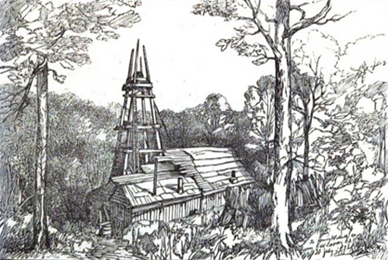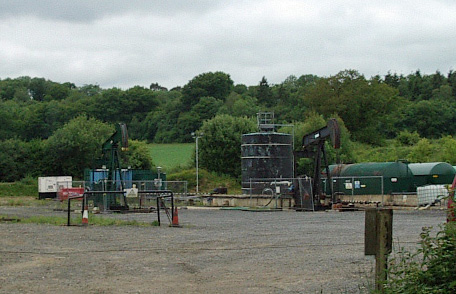9th October 2018
Abstract
In 1875 oil and gas was accidentally found in interbedded Kimmeridgian limestones and shales at Netherfield, Sussex. This well was drilled purely out of academic interest and the sponsors viewed the petroleum as an inconvenient contaminant.
In 1987 academic research carried out at Imperial College was published on the shale gas potential of Lower Carboniferous shales of the Midlands. In 2005 this research was extended to the Jurassic shale gas and shale oil potential of the Weald basin. These publications attracted little attention. Neither industry nor government were interested in a ‘green’ shale gas production model similar to the US Appalachian ‘cottage industry’. This view changed at the turn of the century with the development of a shale gas industry in the USA due to a combination of the appliance of science and hydraulic fracturing.
In 2008 the 13th Round of UK Onshore Licensing saw several blocks awarded for shale gas exploration in the Midlands and many for gas and oil in the Weald. In 2010 the DECC (Now the Oil & Gas Authority) published a report by the BGS that identified prospective Jurassic, Carboniferous and Cambro-Ordovician shales. A 14th round of licensing opened in 2015 and saw the few remaining prospective blocks licensed. In the succeeding years the BGS produced a series of reports with resource estimates for shale gas and oil for the Carboniferous Bowland shale of the Midlands (2013), the Jurassic shales of the Weald (2013), and Carboniferous shales of the Midland Valley of Scotland (2015) and on the Jurassic shales of the Wessex area (2016).
‘Baby steps’ in hydraulic fracturing of the Bowland Shale of Lancashire stopped abruptly on 1 April 2011 when there was an earth tremor adjacent to a well at Preese Hall, Lancashire. Hydraulic fracturing ceased, first voluntarily, and then by government decree. One of many reports was produced by the Royal Society and the Royal Academy of Engineering in 2012. This provided the government with sufficient reassurance to lift the ban on hydraulic fracturing in 2013, though with a tightened up of planning restraints. In February 2016 permission was given to hydraulically fracture a new well at the conventional Kirby Misperton gas field. Imminent commencement of the operation is still awaited.
Exploration in the Weald basin has been more exciting with significant flows of oil having been produced from naturally fractured limestone bands within the Kimmeridge Clay at Horse Hill in 2016. Tests of this Oreo CookieTM hybrid play in other Wealden wells are anticipated.
There has been strong environmental opposition to the production of gas and oil from shale. It will not be known if petroleum production from UK shale is commercial until several wells have been drilled and undergone lengthy production tests. Proof of concept is still awaited 30 years after a commercial shale gas (&oil) play in the UK was first mooted.

Figure 1. Nineteenth century serendipity. The Netherfield No.1 well drilled in E Sussex in 1875 produced oil & gas from naturally fractured interbedded Kimmeridge shales & limestones (By E. Cooke, Esq. RA.)

Figure 2. Twenty-first century science. The Brockham oil field, Surrey. An old (1986) conventional oil field now re-entered in 2017 to produce from naturally fractured interbedded Kimmeridgian shales and limestones.

